Top Rankings
Thatcher Unified District (4219) School District ranks among the top 20% of public school district in Arizona for:
Category
Attribute
Math Proficiency
Highest math proficiency (Top 20%)
Graduation Rate
Highest graduation rate (Top 20%)
Community Size
Largest student body (number of students) (Top 1%)
For the 2025 school year, there is 1 public preschool serving 430 students in Thatcher Unified District (4219) School District.
Public Preschools in Thatcher Unified District (4219) School District have a diversity score of 0.50, which is less than the Arizona public preschool average of 0.64.
Minority enrollment is 36% of the student body (majority Hispanic), which is less than the Arizona public preschool average of 67% (majority Hispanic).
Overview
This School District
This State (AZ)
# Schools
5 Schools
841 Schools
# Students
1,822 Students
395,515 Students
# Teachers
100 Teachers
23,860 Teachers
Student : Teacher Ratio
18:1
18:1
District Rank
Thatcher Unified District (4219) School District, which is ranked within the top 30% of all 607 school districts in Arizona (based off of combined math and reading proficiency testing data) for the 2021-2022 school year.
The school district's graduation rate of 90-94% has decreased from 95% over five school years.
Overall District Rank
#177 out of 631 school districts
(Top 30%)
(Top 30%)
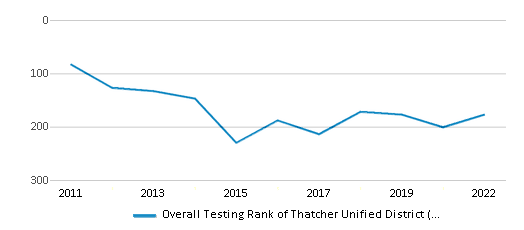
Math Test Scores (% Proficient)
51%
35%
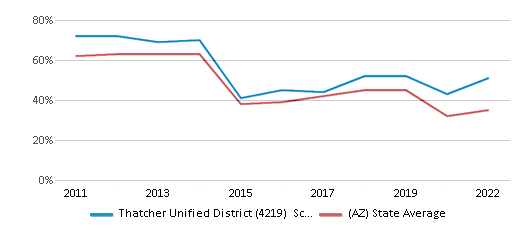
Reading/Language Arts Test Scores (% Proficient)
46%
40%
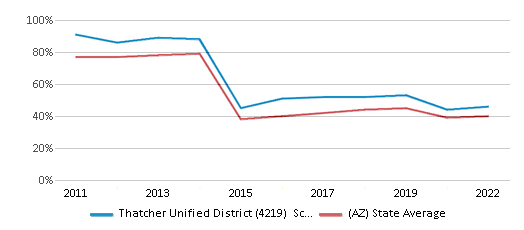
Science Test Scores (% Proficient)
33%
24%
Graduation Rate
90-94%
77%
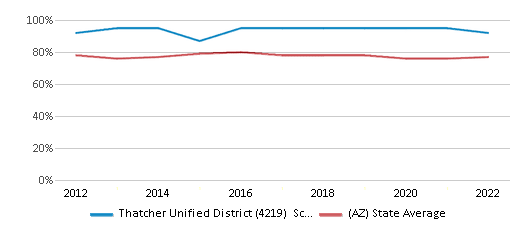
Students by Ethnicity:
Diversity Score
0.46
0.64
# American Indian Students
29 Students
17,006 Students
% American Indian Students
2%
4%
# Asian Students
3 Students
9,623 Students
% Asian Students
n/a
3%
# Hispanic Students
491 Students
195,352 Students
% Hispanic Students
27%
49%
# Black Students
7 Students
22,513 Students
% Black Students
n/a
6%
# White Students
1,248 Students
131,530 Students
% White Students
69%
33%
# Hawaiian Students
1 Student
1,496 Students
% Hawaiian Students
n/a
n/a
# Two or more races Students
43 Students
17,995 Students
% of Two or more races Students
2%
5%
Students by Grade:
# Students in PK Grade:
31
20,476
# Students in K Grade:
123
45,750
# Students in 1st Grade:
150
49,579
# Students in 2nd Grade:
125
52,288
# Students in 3rd Grade:
138
49,880
# Students in 4th Grade:
139
51,327
# Students in 5th Grade:
137
49,953
# Students in 6th Grade:
123
37,491
# Students in 7th Grade:
153
18,851
# Students in 8th Grade:
152
19,086
# Students in 9th Grade:
129
56
# Students in 10th Grade:
150
82
# Students in 11th Grade:
147
63
# Students in 12th Grade:
124
168
# Ungraded Students:
1
465
District Revenue and Spending
The revenue/student of $10,099 in this school district is less than the state median of $11,421. The school district revenue/student has stayed relatively flat over four school years.
The school district's spending/student of $9,121 is less than the state median of $11,323. The school district spending/student has stayed relatively flat over four school years.
Total Revenue
$18 MM
$12,837 MM
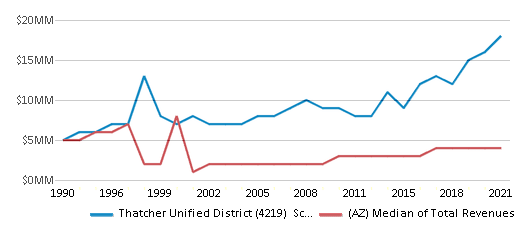
Spending
$17 MM
$12,727 MM
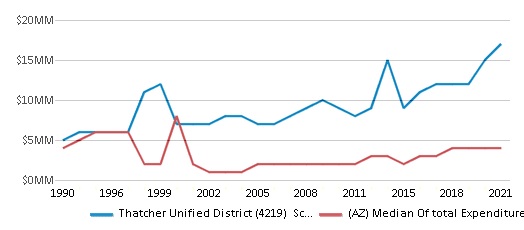
Revenue / Student
$10,099
$11,421
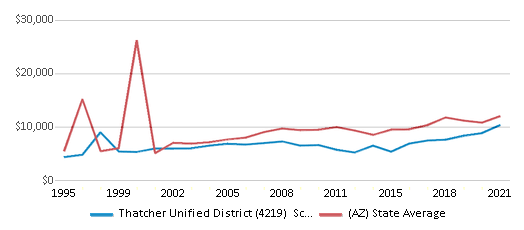
Spending / Student
$9,121
$11,323
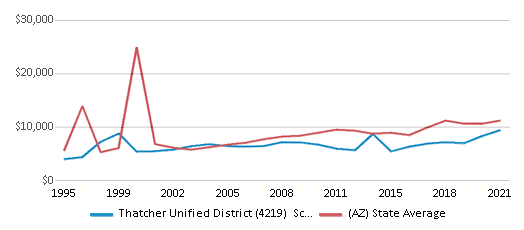
Best Thatcher Unified District (4219) School District Public Preschools (2025)
School
(Math and Reading Proficiency)
(Math and Reading Proficiency)
Location
Grades
Students
Rank: n/an/a
3615 Second St.
Thatcher, AZ 85552
(928) 348-7240
Thatcher, AZ 85552
(928) 348-7240
Grades: PK-2
| 430 students
Recent Articles

Year-Round Or Traditional Schedule?
Which is more appropriate for your child? A year-round attendance schedule or traditional schedule? We look at the pros and cons.

Why You Should Encourage Your Child to Join a Sports Team
Participating in team sports has a great many benefits for children, there is no doubt. In this article you will learn what those benefits are.

White Students are Now the Minority in U.S. Public Schools
Increasing birth rates among immigrant families from Asia and Central and South America, combined with lower birth rates among white families, means that for the first time in history, public school students in the United States are majority-minority. This shift in demographics poses difficulties for schools as they work to accommodate children of varying language abilities and socio-economic backgrounds.





